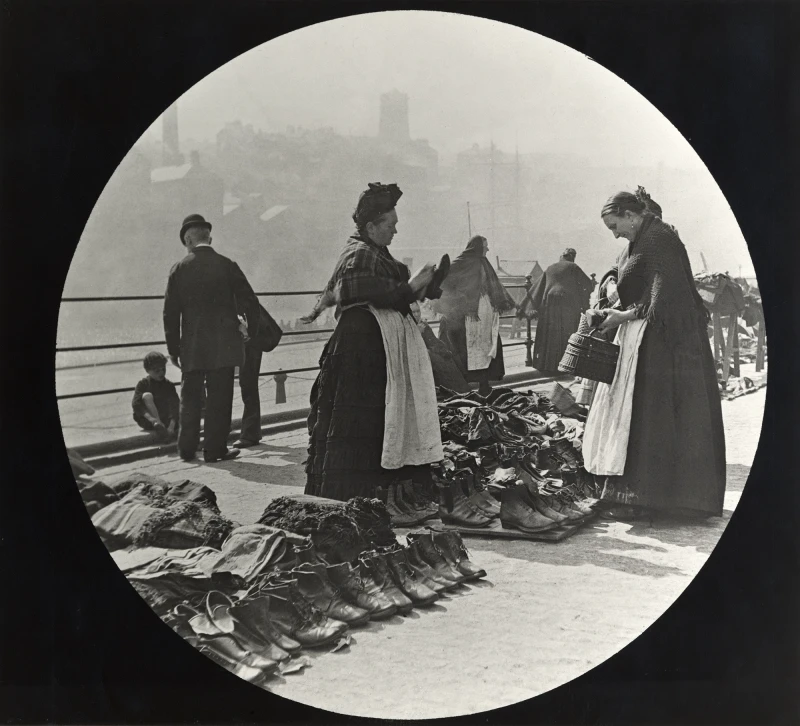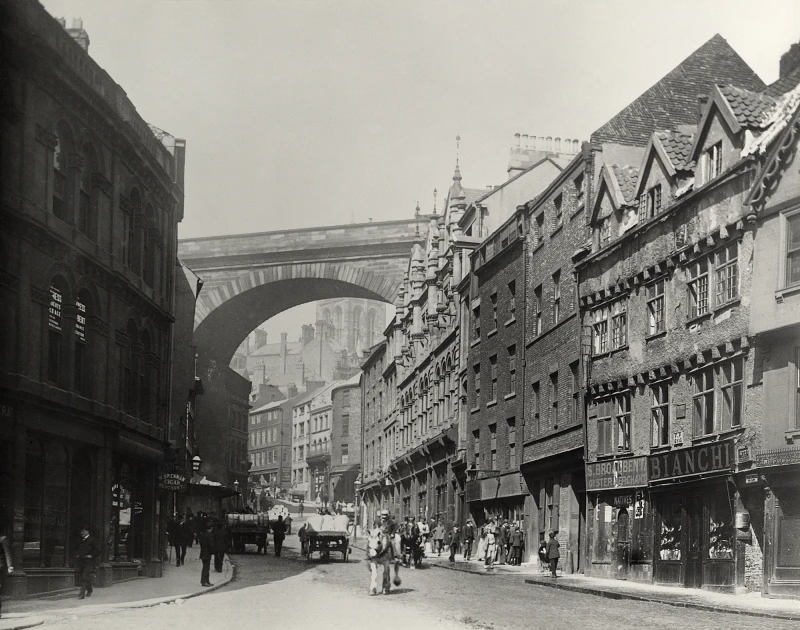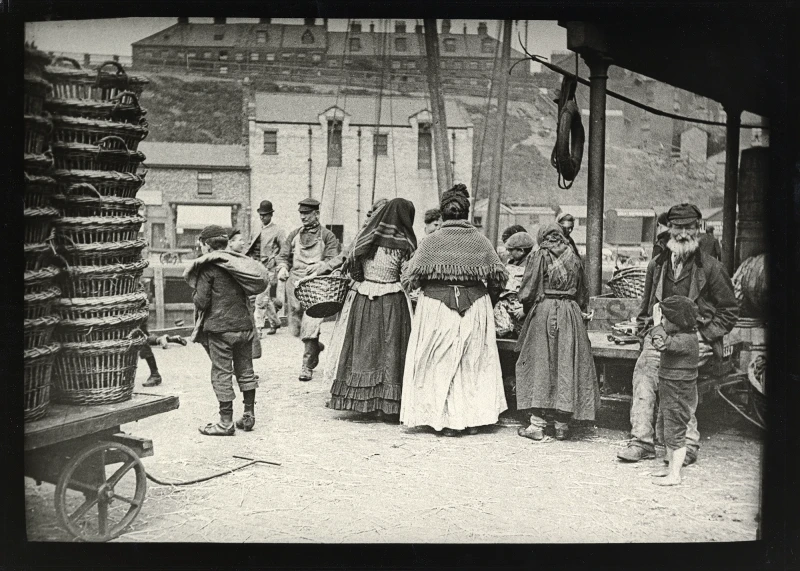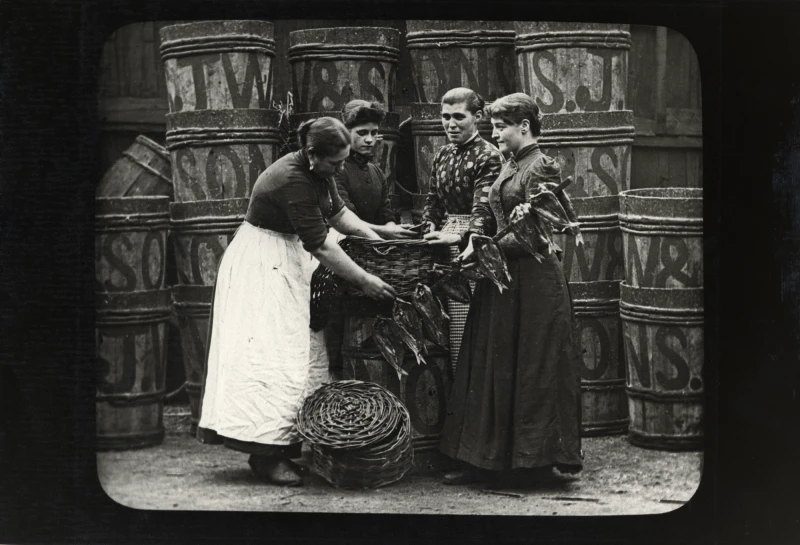Amber Education: Taking Inspiration from Edgar Lee
March 3rd, 2025 | Olivia ShawAt AmberEducation we believe that history should feel personal and connected to the world around us. It is so much more than just dates and facts, it’s about the stories that shape the place we live in today. That’s why we’re developing curriculum-linked lesson plans for local schools inspired by the remarkable photography of Edgar G. Lee, allowing students to see their area through a historical lens that is tangible.
Right now, we are developing our Primary Source programme with New York Primary School. Every lesson we design is created in close collaboration with teachers to ensure alignment with both the National Curriculum and the specific needs of the schools we collaborate with. We want students to engage with history in ways that are meaningful to them. As long-standing members of Learning Arc we have been able to seek valuable advice from Education colleagues working at Newcastle University and Northumberland Archives that has strengthened our lesson planning.

The real magic happens when our local history is brought to life. The AmberSide Collection safeguards an incredible archive of Edgar G. Lee’s photographs. Lee’s images provide an invaluable historical context, helping students explore themes of industrial development and social change. These images capture so much more than just trade, they offer glimpses into daily life, fleeting interactions and routines that Lee preserved through his deep interest in the local area. Street photography was rare at the time, if anything, Lee was a pioneer of this style of photography.
I remember when I began researching Lee’s work, it was a particularly cold day in the attic of Side's Quayside office. The building is magical with its original wooden beams and fireplaces complemented by a beautiful view of the Tyne Bridge that evokes a strong feeling of old Newcastle.

Sifting through the Lee collection I found a photograph of Side, taken on the cusp of Sandhill and Queen Street, I was struck by how little had changed. When I made my way down the Battery Stairs and looked out on the street that Lee had photographed, the view was practically the same as it had been in the 1890s. We are so lucky to live in a city oozing with architectural and cultural history that spans centuries. This beauty echoes across our entire region.
If you haven’t yet explored Lee’s collection, do take a look, you’ll be familiar with more locations than you’d first think! A shocker is always the picture of four elephants making their way down Grey Street, not a sight you’d see down the one-way system today.
Alongside lesson planning, we are creating something truly special, our Community Curriculum Making (CCM) initiative. This is more than just education, it’s about forging intergenerational connections, ensuring that local heritage is passed down in a way that is living and breathing. This approach builds a hub of local residents who share their personal histories to enrich the learning of local students. Through collaboration with past project participants, we have uncovered fascinating lived experiences connected to our archive. These stories bring history to life, ensuring that local heritage is not just studied in textbooks but continuously shaped by those who lived it.
Diving further into Lee’s archive, you will find some incredible pictures of North Shields Fish Quay. These photographs have been enlivened for me through interviews with local residents as part of our CCM initiative. One particularly moving story that has stayed with me recently came from a lovely community member who told me about her formidable grandmother. This remarkable woman spent her entire life working on the Fish Quay, carrying fish to Tynemouth in a basket balanced on her head - so much so that her skull became flattened from years of bearing heavy loads.

Her youngest son was born in 1901, and with no other option, she brought him to work with her. Every day they would walk for miles, she kept him close by fastening him to the cloth tied around her waist. From the anecdotes I have been told, I get the impression she was a person determined to provide for her family during an incredibly austere time. Like so many women in poverty at the turn of the century, her endurance is beyond comprehension.
Her role in the community extended far beyond the Fish Quay. She and her sister also helped deliver babies for the women of North Shields, and when death came, they prepared bodies for burial. Women like these were the backbone of their communities, yet their stories remain largely untold.
Exploring Edgar G. Lee’s photographs in our collection has truly brought the world of these incredible women to life for me. Their story feels visceral - you can almost smell the stench of salted fish and hear the bustle of the street markets as you inspect Lee’s photographs of North Shields. I can only imagine the bitter cold of the Quay as they worked. It must have been biting. This is the power of visual storytelling, and it is exactly what we want students to experience.
There is so much more of this story to share, I have barely scratched the surface with this entry. Thankfully, through our community work, their voices will be heard and preserved. Without a project like this, her story might have remained untold. Now, thanks to our Community Curriculum Making (CCM) initiative, her story is being recorded and, to my great joy, preserved forever. We hope to raise as many silent voices as possible through our work - I would collect every last one if I could! It is a privilege to do this work with the local community, we hope this is only the beginning.
Thanks to the support of the Paul Hamlyn Foundation, we are able to deliver high-quality projects that encourage creativity, soft-skill development, and a deeper connection to local heritage. This is just the beginning. As our projects evolve, we will share more about how our residency work, archive-enriched learning, and camera skills training are coming together to inspire students to explore history in their own creative ways. By collaborating with local residents, teachers, students, and historians, we aim to keep local history a living, breathing part of the community - widely accessible to the future generations of students in the North East. Local voices enrich the learning experience in ways no textbook ever could. Without this work, many of these histories would go untold. Now, they are being woven into the curriculum, shaping how students see the past and their place in the present.

Stay tuned for updates on our upcoming photography projects where students will use the AmberSide Collection to capture their own perspectives on local history. I will be back with an update soon!
May the road rise to meet you,
Olivia
